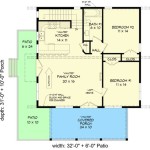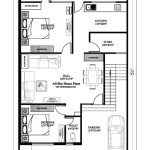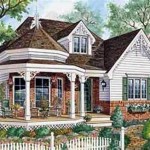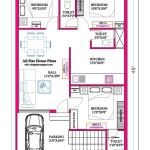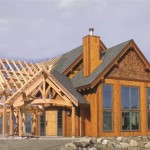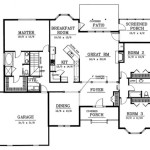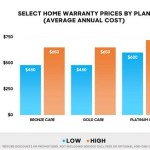14x60 Mobile Home Floor Plans: Maximizing Space and Functionality
The 14x60 mobile home floor plan represents a popular choice for individuals and families seeking affordable and efficient housing. These homes offer a balance between living space and cost-effectiveness, making them attractive alternatives to traditional site-built houses or larger manufactured homes. Understanding the nuances of these floor plans is crucial for prospective buyers or remodelers aiming to optimize their living environment.
This article will explore the key considerations when examining 14x60 mobile home floor plans, focusing on common layouts, potential customizations, and factors influencing design choices. Furthermore, the article will delve into the benefits and drawbacks of opting for this size of mobile home.
Common 14x60 Mobile Home Floor Plan Layouts
14x60 mobile homes typically offer around 840 square feet of living space, demanding careful consideration of layout to ensure functionality and comfort. Several common floor plan configurations cater to various lifestyle needs.
Two-Bedroom, One-Bathroom: This layout is perhaps the most prevalent. It usually features a master bedroom at one end of the home, often with a built-in closet. The second bedroom is typically smaller and can serve as a guest room, child's room, or home office. A single bathroom is centrally located for easy access from both bedrooms and the living area. The kitchen and living room are often combined in an open-concept design to maximize perceived space. Variations may include a utility area for laundry appliances.
Two-Bedroom, Two-Bathroom: This floor plan provides enhanced privacy and convenience. Similar to the one-bathroom layout, it features two bedrooms, but each is typically accompanied by its own bathroom. The master bedroom often has an en-suite bathroom, while the second bathroom can be accessed from the hallway. This configuration is particularly appealing to families or individuals who value personal space. The kitchen and living room usually occupy the central area of the home.
Three-Bedroom, One-Bathroom: This layout maximizes sleeping capacity, making it suitable for larger families or those who frequently host guests. The three bedrooms are typically smaller than those found in the two-bedroom layouts. This configuration often necessitates a more compact living and kitchen area to accommodate the additional bedroom. Careful planning is essential to prevent overcrowding and ensure adequate storage.
Open-Concept Living: Regardless of the number of bedrooms and bathrooms, many 14x60 mobile home floor plans emphasize open-concept living. This design approach combines the living room, dining area, and kitchen into a single, unified space. This creates a more spacious and airy feel, making the home appear larger than it actually is. Open-concept designs also facilitate social interaction and allow for greater flexibility in furniture arrangement. However, it's important to consider the trade-off between open space and privacy when choosing this type of layout.
Factors Influencing Floor Plan Design
The design of a 14x60 mobile home floor plan is influenced by a variety of factors, including the manufacturer, intended use, and local building codes. Understanding these factors can help buyers make informed decisions and customize their living space to meet their specific needs.
Manufacturer: Different manufacturers offer varying floor plan options and design styles. Some manufacturers specialize in budget-friendly homes with basic layouts, while others offer more customizable and luxurious options. Researching different manufacturers and comparing their floor plans is crucial to finding a home that aligns with individual preferences and budget constraints.
Intended Use: The intended use of the mobile home will significantly impact the ideal floor plan. For example, a single individual may prioritize a large master bedroom and a spacious living area, while a family with children may require multiple bedrooms and a dedicated play area. Considering the long-term needs of the occupants is essential when selecting a floor plan.
Local Building Codes: Mobile homes are subject to federal and state building codes, which dictate minimum room sizes, safety requirements, and energy efficiency standards. It's important to ensure that the chosen floor plan complies with all applicable codes to avoid potential legal issues and ensure the safety of the occupants. Local building codes may also influence the placement of windows, doors, and other structural elements.
Lifestyle and Personal Preferences: Ultimately, the best floor plan is one that aligns with the occupants' lifestyle and personal preferences. Consider how the space will be used on a daily basis and prioritize features that are important to individual comfort and convenience. For example, individuals who enjoy cooking may prioritize a well-equipped kitchen with ample counter space, while those who work from home may require a dedicated office area.
Customization Options for 14x60 Mobile Homes
While manufacturers offer a range of standard floor plans, many 14x60 mobile homes can be customized to better suit individual needs and preferences. Customization options can range from minor modifications to significant structural changes.
Interior Finishes: One of the most common customization options involves selecting interior finishes such as flooring, wall coverings, and cabinetry. Upgrading these features can significantly enhance the aesthetic appeal and perceived value of the home. Consider opting for durable and low-maintenance materials that will withstand the wear and tear of daily use.
Appliance Packages: Buyers can often choose from different appliance packages, ranging from basic models to high-end, energy-efficient options. Upgrading to better appliances can improve functionality and reduce energy consumption. Consider the size and features of the appliances to ensure they are suitable for the available space and the occupants' cooking habits.
Layout Modifications: Some manufacturers allow for minor layout modifications, such as relocating walls, adding or removing closets, or reconfiguring the kitchen or bathroom. These types of changes can significantly improve the functionality and flow of the home. However, it's important to consult with a qualified contractor or structural engineer to ensure that any modifications comply with building codes and do not compromise the structural integrity of the home.
Exterior Features: Customization options may also extend to exterior features such as siding, roofing, and landscaping. Upgrading these features can enhance the curb appeal of the home and increase its resale value. Consider selecting durable and weather-resistant materials that will protect the home from the elements and minimize maintenance requirements.
Accessibility Modifications: For individuals with disabilities, accessibility modifications are essential. This can include wider doorways, ramps, grab bars in bathrooms, and accessible kitchen layouts. Many manufacturers offer accessibility packages or can customize homes to meet specific accessibility needs.
Benefits and Drawbacks of 14x60 Mobile Homes
Choosing a 14x60 mobile home involves weighing its benefits and drawbacks against individual needs and priorities. Understanding these factors is crucial for making an informed decision.
Benefits:
Affordability: 14x60 mobile homes are generally more affordable than site-built houses of comparable size. This makes them an attractive option for first-time homebuyers, retirees, or those seeking cost-effective housing solutions.
Efficiency: Their compact size promotes energy efficiency, leading to lower utility bills compared to larger homes. Modern mobile homes are often equipped with energy-saving features such as insulated windows, energy-efficient appliances, and improved insulation.
Relocatable: While not typically moved frequently, mobile homes offer the potential for relocation, providing flexibility in the event of job changes or lifestyle adjustments.
Drawbacks:
Limited Space: The relatively small square footage can feel cramped for larger families or those who prefer spacious living environments. Careful planning and efficient storage solutions are essential for maximizing the usable space.
Depreciation: Mobile homes tend to depreciate in value over time, unlike site-built houses which typically appreciate. This can impact resale value and limit the potential for building equity.
Financing Challenges: Securing financing for mobile homes can be more challenging than obtaining a mortgage for a traditional house. Interest rates are often higher, and loan terms may be shorter.
Land Rent or Purchase: Mobile homes typically require renting or purchasing a lot in a mobile home park or private land. These costs must be factored into the overall housing expense.
Ultimately, the decision to purchase a 14x60 mobile home depends on individual circumstances and priorities. Careful consideration of the benefits and drawbacks, along with a thorough assessment of personal needs and budget constraints, is essential for making a well-informed choice.

Gold Star 3264 215 Fortune Homes Champion Floor Plans Mobile Home Barndominium

Diamond 1680 215 Dutch Housing Champion Homes

Diamond 1670 215 Dutch Housing Na

215 Dick And Jane Ln Sun Valley Nv 89433 Zillow

Modular Homes For In Fort Worth Tx Mobile Floor Plans Palm Harbor

Decatur Al Houses For Pg 2 Homes Com

4 Bedroom Houses In 76052 Under 500 000 Homes Com

Cozy 1800 Sq Ft Barndominium Floor Plans Houseplans Blog Com

Cozy 1800 Sq Ft Barndominium Floor Plans Houseplans Blog Com

Rockwood Mini Lite Campers


